– Bekamp Melkkoors vir Winsgewende Melkboerdery –
Inleiding
Die voeding en bestuur van suiwelkoeie tydens die oorgangsfase (21 dae voor tot 21 dae na kalf) het in die afgelope jare baie aandag geniet. Dit is met reg so omdat probleme tydens hierdie fase die wins van ‘n koei vir die spesifieke laktasie totaal kan erodeer. Die belangrikste abnormaliteite soos distokia, metritis, vassit van nageboorte, melkkoors, ketose, verplaasde abomasum en lamheid is interverwant en min melkkoeie kalf sonder gesondheidsprobleme. Die feit dat hierdie abnormaliteite interverwant is noop suiwelboere om te fokus op die totale bestuur en voeding van die oorgangsfase eerder as om op enkele probleme te konsentreer.
Melkkoeie se genetiese vordering is hoofsaaklik in melkproduksie gesetel en baie vinnig na kalwing word veelvoudig meer melk as die behoefte van die pasgebore kalf geproduseer. Daardeur ontstaan ‘n unieke fisiologiese toestand waar ‘n groot hoeveelheid kalsium (Ca) skielik uit die bloed opgeneem word en daarom ondervind meeste melkkoeie ‘n sekere graad van hipokalsemie en wat omgeskakel kan word in wat ons ken as kliniese melkkoors. Vleisbeeskoeie kan die toestand egter beter hanteer omdat die Ca behoefte veel laer is as by melkkoeie, weens ‘n veel laer melkproduksie.
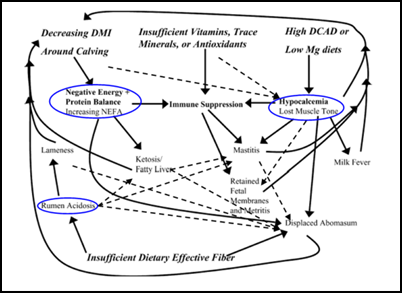
Hipokalsemie en Melkkoors
Melkkoors is nie ‘n voedingkundige Ca tekort nie. Dit is ‘n toestand wat rondom kalwing ontstaan en nie in latere laktasie volhou word wanneer Ca verlies in melk selfs nog groter is as wat die dieet voorsien nie, soos byvoorbeeld tydens pieklaktasie. Melkkkoors is dus ‘n nie-voedingkundige, nie-degeneratiewe produksie siekte en word gekenmerk deur hipokalsemie tydens geboorte weens die skielike verhoogde Ca behoefte en ‘n vertraging in die aanpassing van ‘n vereiste verhoogde Ca metabolisme. Melkkoors word dus veroorsaak deur ‘n te stadige spoed in metaboliese aanpassing en nie deur ‘n tekort wat geskep word deur die behoefte van die koei en wat in die dieet voorsien word nie.
Serum Ca word hormonaal beheer deur onder andere parathormoon (PTH) en 1,25-dihidroksivitamien D (kalsitriol). Hierdie hormone is betrokke by renale Ca re-absorbsie, intestinale Ca transepiteleale vervoer en Ca omset in die skelet. PTH speel ‘n belangrike rol in korttermyn Ca balans deur opname en uitskeiding deur die niere te beheer. Renale Ca uitskeiding is egter klein (1g/dag) en kan nog kleiner wees of baie groter afhangende die Ca status en die PTH sein. Dit is dus net van waarde tydens hiperkalsemie en nie tydens hipokalsemie soos wat met kalwing ondervind word nie. Die proses waar kalsitriol intestinale Ca absorbsie beheer kan wel groot hoeveelhede Ca verskaf tydens tekorte, maar die proses kan tot 48 dae neem om effektief te wees. Been is egter ‘n groot bron van Ca (10kg) en kan dus ontgin word om ernstige Ca tekort periodes, soos tydens kalwing, op te hef. Die maklik beskikbare Ca in die skelet is egter klein, maar kalsitriol is die sneller om groot hoeveelhede Ca uit die been te mobiliseer indien die PTH sein nie verdwyn nie, m.a.w. die tekort sein moet aan wees. In die eerste paar maande van laktasie word tot 1kg Ca uit die beenmatriks gemobiliseer om in die Ca behoefte te voldoen.
Serum Ca vlakke onder 8mg/dl en 7.6mg/dl kan onderskeidelik as sub-klinies en kliniese melkkoors beskou word, maar is nie noodwendig altyd gekorrelleer met kliniese simptome nie. Verse is beslis minder vatbaar vir hipokalsemie en soos koeie ouer word, met meer laktasies, neem die vatbaarheid met ongeveer 9% per laktasie toe. Hierdie is nie noodwendig ‘n degeneratiewe toestand nie. Die verband tussen pariteit (laktasies) en melkkoors insidensie kan eerder verklaar word deur verhoogde melkproduksie, verlaagde DMI in die oorgangsfase (gewoonlik by oorvet koeie) en ander metabolise steurnisse.
Voorkoming van melkkoors
In die verlede is vele dinge en middels probeer om melkkoors te beheer onder andere verhoogde vitamien D vlakke, veranderinge op Ca:P verhouding, ‘n lae Ca dieet, orale toediening met Ca preparate en nog meer. Vandag is die voorkoming eerder multi faktoriaal en geïntegreer in ‘n oorgangsfase voeding- en bestuurstrategie om melkkoors EN ander metaboliese probleme te bekamp. Strategieë om melkkoors te bekamp fokus gewoonlik om Ca metabolisme aan te pas deur Ca balans weke voor kalwing “aan te wakker”. Dit kan gedoen word deur of die Ca voeding te verlaag of deur ‘n lae dieet katioon anioon balans om hiperkalsinurie (Ca uitskeiding deur die niere) te bewerkstellig. Orale toediening van Ca kan hier ook komplimenterend wees, terwyl binne-aarse toediening van Ca preparate nadelig kan wees. Dit is ook belangrik dat ander makrominerale, asook die energie en proteïen pakket in die dieet aandag moet kry om melkkoors effektief teen te werk.
Lae Ca dieet
Indien Ca inname verlaag kan word tot minder as 20g per dag is dit ‘n opsie om melkkoors te verhoed. Die probleem is dat dit nie altyd moontlik is nie en sal afhang van watter roumateriale gebruik word in die opstoomdieet. Konsentrate is gewoonlik laag in Ca terwyl ruvoere hoë waardes het en dit is nie heeltemal versoenbaar met ‘n opstoomdieet waar beperkende energie en hoër ruvoervlakke gevoer word nie. Sekere ruvoere soos mieliekuilvoer en strooie is laag in Ca, maar strooi beperk weer DMI. Groen grasse en lusern moet liewer vermy word, omdat dit betreklik hoog in Ca inhoud is.
Ca antagoniste
Zeoliet kleie is ook al ingespan om Ca beskikbaarheid voor kalwing te beperk, maar veroorsaak ook ‘n laer DMI en bloedvlakke van magnesium (Mg) en fosfor (P). Rumenbeskermde fitiensuur is egter effektief om Ca beskikbaarheid te beperk. Ryssemels is hoog in fitiensuur maar word in die rumen afgebreek en moet dus deur spesiale prosessering beskerm word om effektief te wees.
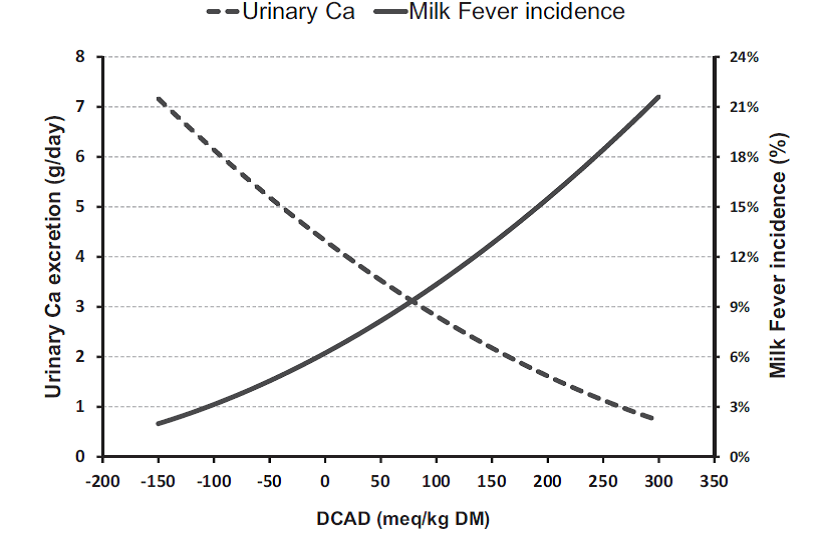
Negatiewe katioon anioon balans
Die mees algemene en effektiewe manier om melkkoors te verhoed is deur ‘n matige metaboliese asidose te skep deur die DKAB balans te modifiseer. Dit word gedoen deur minerale soos Cl- en S2- in verbindings te gebruik wat anioonsoute genoem word en so min moontlik Na+ en K+, genoem katione. Die balans word en milli-ekwivalente bereken deur die som van Na en K minus die som van Cl en S. ‘n Hoë DKAB is gewoonlik te wyte aan hoë K wat ook dan indirek verantwoordelik is vir melkkoors weens sy negatiewe impak op Mg opname. Anioonsoute is effektief wanneer ‘n DKAB van -50 tot -150 mEkw/kg DM bereik word, metaboliese asidose inskop, die uriene versuur en Ca uitskeiding in uriene verhoog. Dit verseker dat PTH en kalsitriol afgeskei word en Ca uit die been gemobiliseer word om sodoende melkkoors insidensie te verlaag. Uriene pH kan effektief as indikator van hipokasemie gebruik word en is hoogs gekorrelleerd met uriene Ca. Die proteien wat die tempo van aktiewe transport en dus opname van Ca in die niere bepaal is baie pH sensitief en aktiwiteit halveer teen lae fisiologiese pH, wat verhoogde utskeiding van Ca in die uriene tot gevolg het. Die mikpunt is uriene pH van 6-6.5 vir Holstein koeie en 5.8-6.2 vir Jersey koeie.
Anioonsoute kan egter ‘n negatiewe effek op DMI hê, maar gewoonlik net indien die konsentraat of meel wat die anioonsoute bevat,op sy eie gevoer word en nie wanner dit in ‘n volledige TGR gevoer word nie. ‘n Goeie alternatief is om soutsuur (HCl) in stede van anioonsoute te gebruik, wat geen negatiewe impak op DMI het nie, maar wat natuurlik ‘n uitdaging inhou t.o.v. veilige hantering en die erroderende effek op toerusting.
Magnesium (Mg), Kalium (K), Natrium (Na) en Ammoniak (NH3) as risiko faktore vir melkkoors
Mg absorpsie geskied hoofsaaklik in die rumen en word onderdruk deur ‘n hoë K konsentrasie in die dieet, veral teen lae Mg konsentrasies, ‘n lae Na konsentrasie asook ‘n skielike toename van NH3 in die rumen. Laasgenoemde se effek neem egter oor ‘n 2-3 dae periode af soos die rumenwand aanpas by hoër NH3 vlakke. Hipomagnesemia (lae bloedvlakke van Mg) wat hierop volg, onderdruk weer PTH afskeiding en die effek van PTH op die mobilisasie van Ca uit die been wat noodsaaklik is om melkkoors tydens kalwing teen te werk. Dit is dus belangrik, met in ag neming van dieet K inhoud en die biobeskikbaarheid van Mg, om dieet Mg vlakke te verhoog tot 0.4% van DM en selfs hoër om melkkoors risiko te beperk. Hierdie konsentrasie bereken deur die onderhoudsbehoefte, kolostrumbehoefte, biobeskikbaarheid en die daling in DMI rondom kalwing, in ag te neem.
Ander belangrike aspekte met betrekking tot die oorgangsfase
• Tekens van ‘n onvoldoende oorgangsprogram sluit in koeie wat trae en sikliese voerinname veral na kalwing toon, buitensporige metaboliese- en infeksieprobleme en erge verlies aan liggaamsmassa.
• Rondom kalwing verlaag rumenkapasiteit en dus inname, maar terselfdertyd styg die koeie se energiebehoeftes dramaties. Om te kompenseer verbruik die koeie liggaamsvet (NEFA) wat dikwels nie volledig na energie omgeskakel word nie. Een van die afbraakprodukte van die proses in die lewer, is asetaat. Indien propionaat beskikbaar is word die asetaat omgesit in energie. Indien propionaat nie beskikbaar is nie word ketone gevorm wat dikwels op die koei se asem geruik kan word. Vandaar die naam ketose en is basies ‘n gevolg van ‘n energietekort. Dit kom baie dikwels voor by vet koeie met ‘n kondisie van 4+.
• Skielike melkproduksie na kalwing veroorsaak ‘n geweldige behoefte vir kalsium (Ca) wat nie dadelik bevredig kan word nie. Bloed Ca vlakke daal dan sodanig dat melkkoors onstaan. Die verhoogde behoefte moet aanvanklik bevredig word deur Ca uit been te mobiliseer totdat die spysverteringskanaal se vermoë om Ca te absorbeer verhoog het.
• Subkliniese melkkoors kan ook aanleiding gee tot verplaasde abomasum en ketose omdat dit die gladdespierfunksie inhibeer wat krities is vir normale fuksionering van die spysverteringskanaal.
• Tydens die oorgangsfase word die immuunstelsel se funksionering onderdruk met die gevolglike verswakte vermoë om op infeksies te reageer. Dit verhoog dus die kanse vir infeksies soos mastitis en metritis.
Wenke en duimreëls vir die oorgangsfase
• Koeie moet in die regte kondisie kalf (kondiesiepunt 3.5).
• Stimuleer koeie se aptyt voor en na kalwing om te verseker dat DMI so hoog moontlik is en negatiewe energie balans (NEB) dus beperk word. Deur gebruik te maak van ‘n 21 dae voor kalf opstoomdieet en ‘n vars-in-melk dieet kan baie help om DMI maksimaal te hou, so min moontlik vet te mobiliseer (NEFA) en dus minder na-kalwing probleme te ondervind. Sulke diëte moet wetenskaplik saamgestel wees om aan al die besondere behoeftes van oorgangskoeie te voldoen en spesifieke aandag aan energie, aminosure, Ca, Mg, Na, K, spoorminerale en vitamiene is belangrik.
• Die rumen moet optimaal aangepas word vir die oorgang na hoë kragvoer diëte, met veral energiesamestelling in ag genome, sonder om asidose te veroorsaak of koeie vet te maak en insulien weerstandigheid te veroorsaak.
• Ruproteïen moet binne perke wees, met aandag aan die korrekte aminosure om lae, maar goeie kwaliteit kolostrumproduksie te verseker en om aanvanklike melkproduksie nie te veel te stimuleer nie.
• Handhaaf hoë bloedkalsiumvlakke rondom kalwing deur te verseker dat koeie Ca vinnig uit die been kan mobiliseer. Dit kan bewerkstellig word deur:
o Ca in die dieet sodanig te verlaag (< 20g/koei/dag) dat ‘n negatiewe Ca-balans ontstaan en sodoende mobilisasie van Ca uit die been stimuleer. Dit is egter baie moeilik om so ‘n dieet te formuleer.
o ‘n Metaboliese asidose te veroorsaak d.m.v ‘n negatiewe dieet-katioon-anioonbalans (DKAB), sodat die pH van die bloed daal en mobilisasie van Ca uit die been gestimuleer word. Negatiewe dieet-katioon-anioonbalans kan geskep word deur die gebruik van anioonsoute (soute van chloriedes- en sulfate) om ‘n negatiewe DKAB te verkry.
• Lae magnesium (Mg) vlakke in die bloed gee ook aanleiding tot melkkoors en dit is belangrik om 0.35-0.45% Mg in die opstoomdieet te voorsien.
• Die korrekte medikamente en spesifieke voedingstowwe moet ingesluit word vir die ondersteuning van die immuunfunksie, spesifieke organe en die endokriene stelsel wat krities is vir gesonde koeie met optimale metaboliese en fisiologiese funksies. Spesiale aandag moet ook gegee word aan medikamente om rumengesondheid te bevorder met ‘n fokus op positiewe energiebalans.
• Verskaf deurgaans voldoende skoon, vars en koel drinkwater.
• Moenie oorskiet of gemufde voer vir die koeie gee wat moontlik DMI kan onderdruk nie. Hou voerbanke vol vars voer. Verskaf voldoende koel maklik bereikbare drinkwater. Hou vesellengte dop en sluit ‘n bietjie ekstra lang vesel in die dieet in om rumensteurnisse te voorkom.
• Dra sorg dat koeie gemaklik is en beperk faktore wat tot “stress” aanleiding gee. Groepering van koeie kan belangrik wees deur oor-agressiewe koeie eenkant te hou omdat sulke koeie die inname van ander kan beïnvloed.
• Dit is uiters belangrik om spoorminerale en vitamiene gebalanseerd te voorsien vanweë die essesiële rol in soveel lewensfunksies en veral die handhawing van die immuunstelsel gedurende hierdie fase. Dit word sterk aanbeveel dat melkkoeie 3 weke voor kalwing ‘n dosis van ‘n inspuitbare vitamien-spoorminerale preparaat ontvang.
Vir meer inligting, skryf aan [email protected].
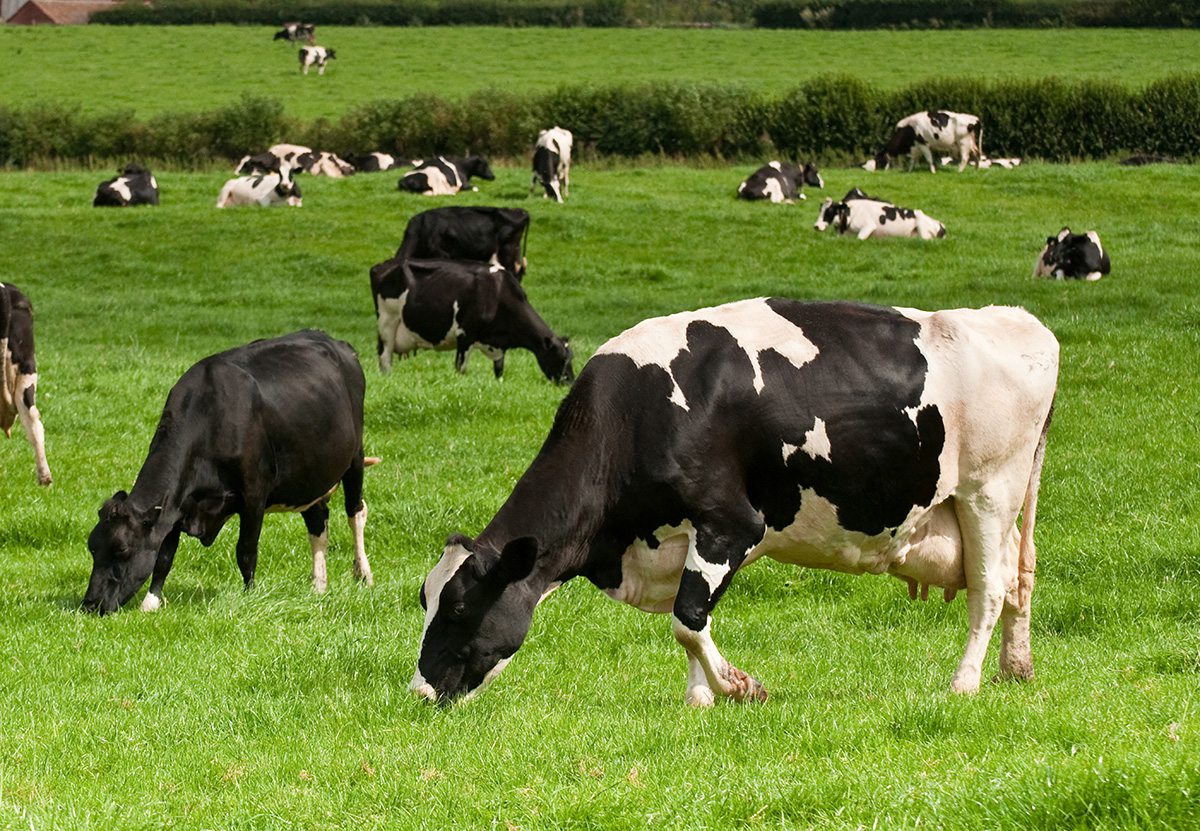
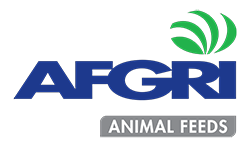
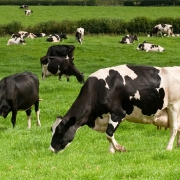
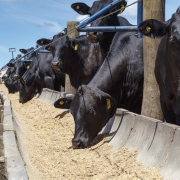
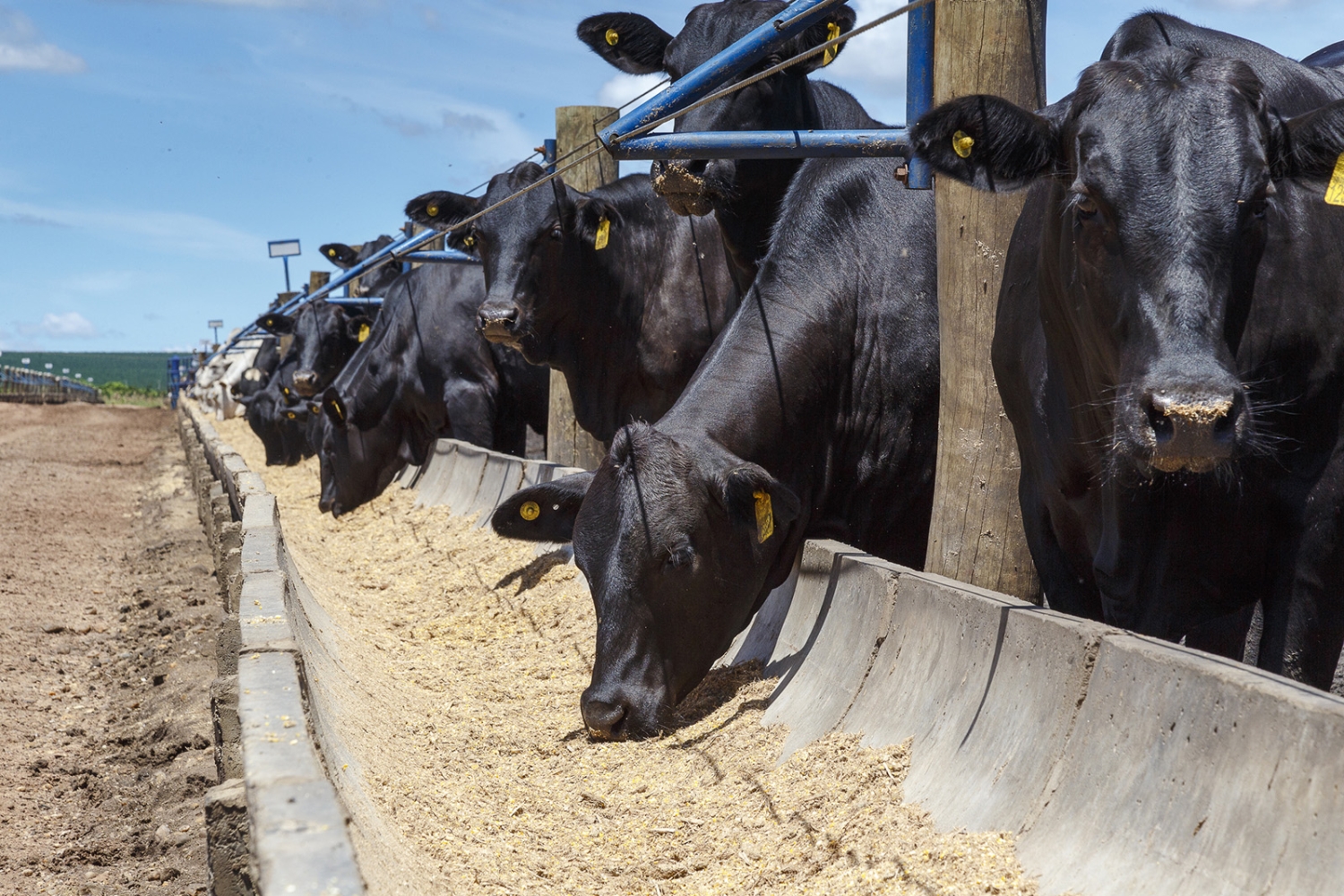
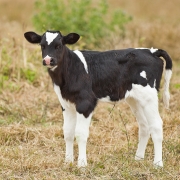
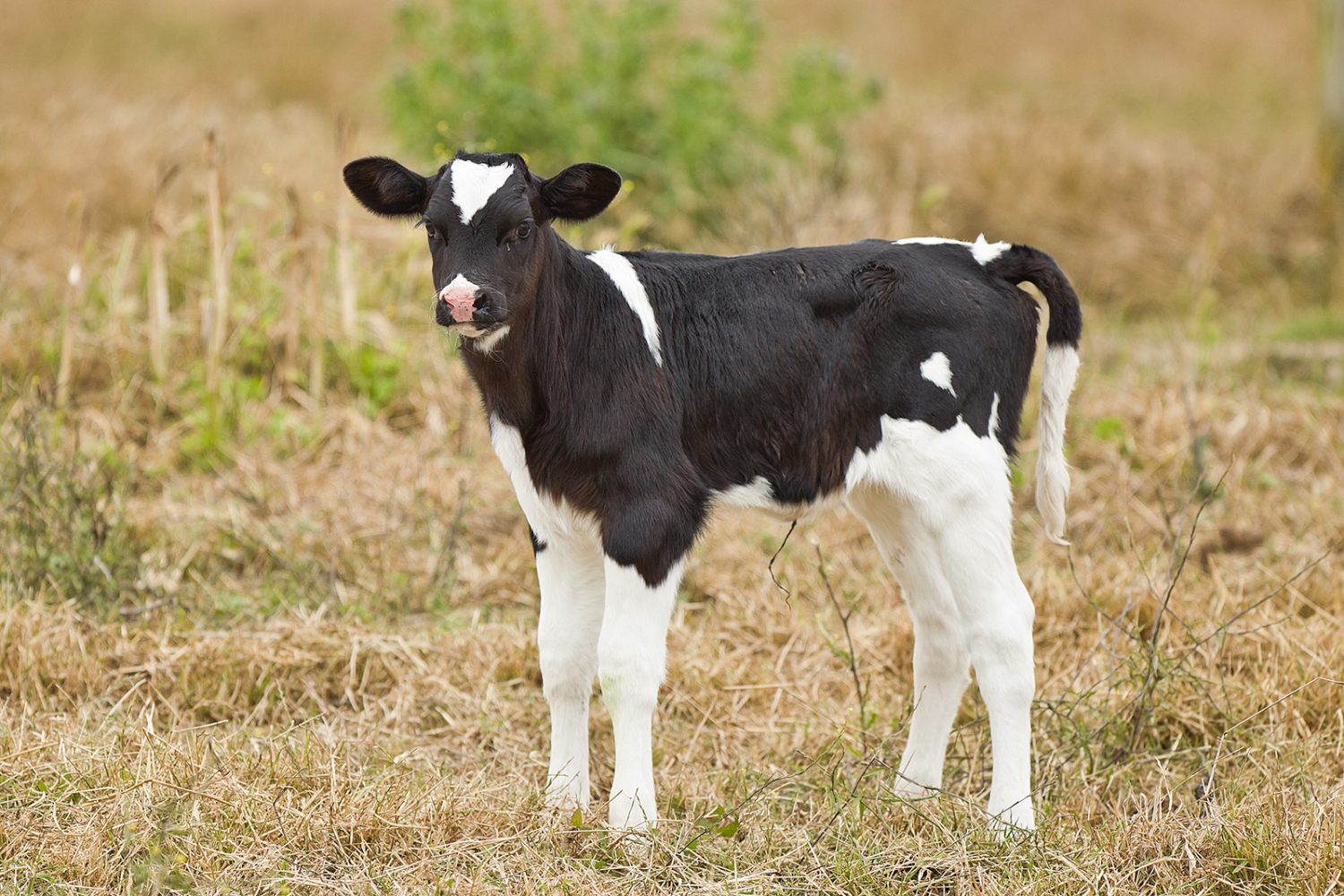
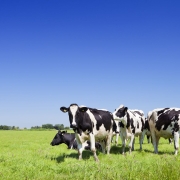
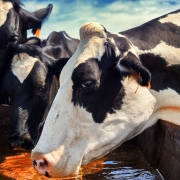
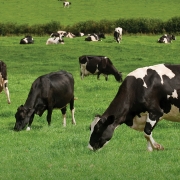

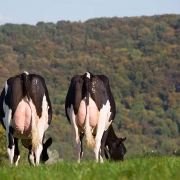
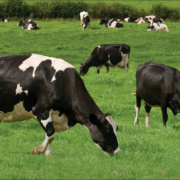

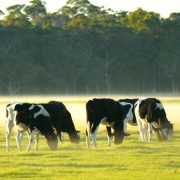


.png)